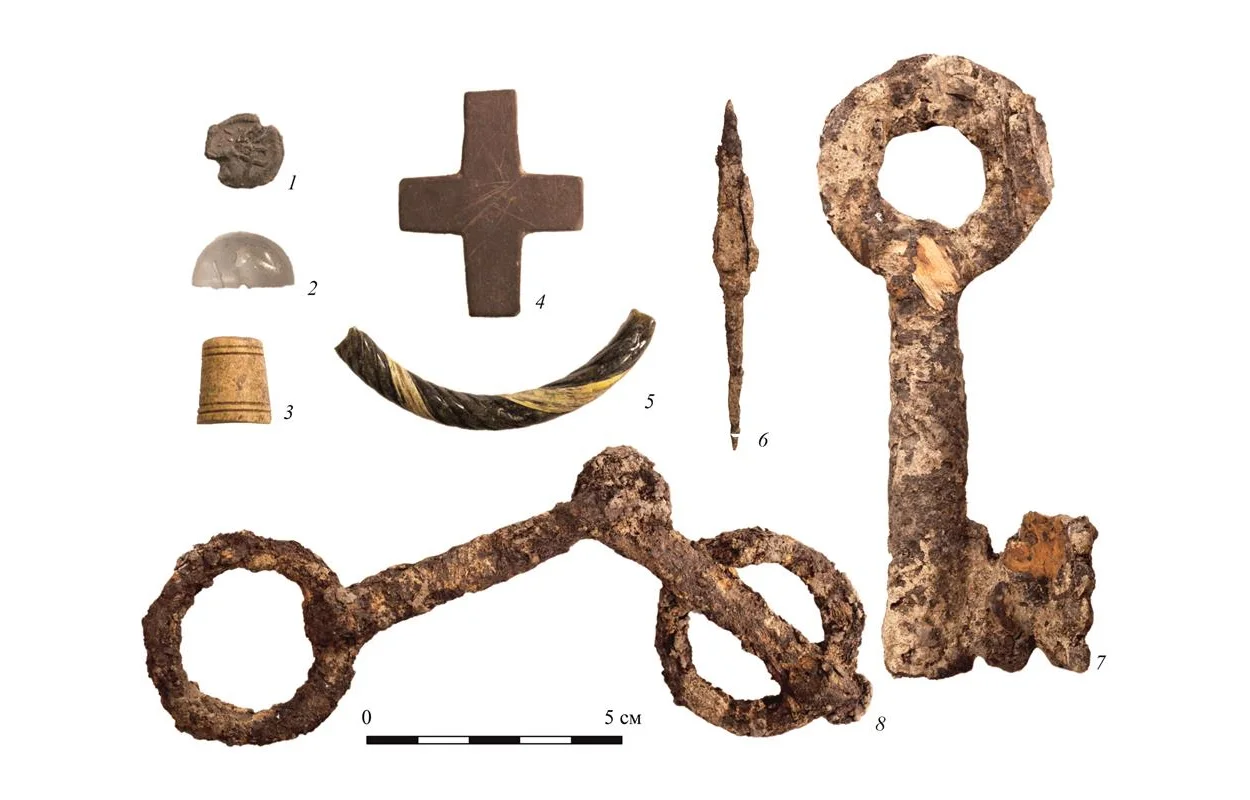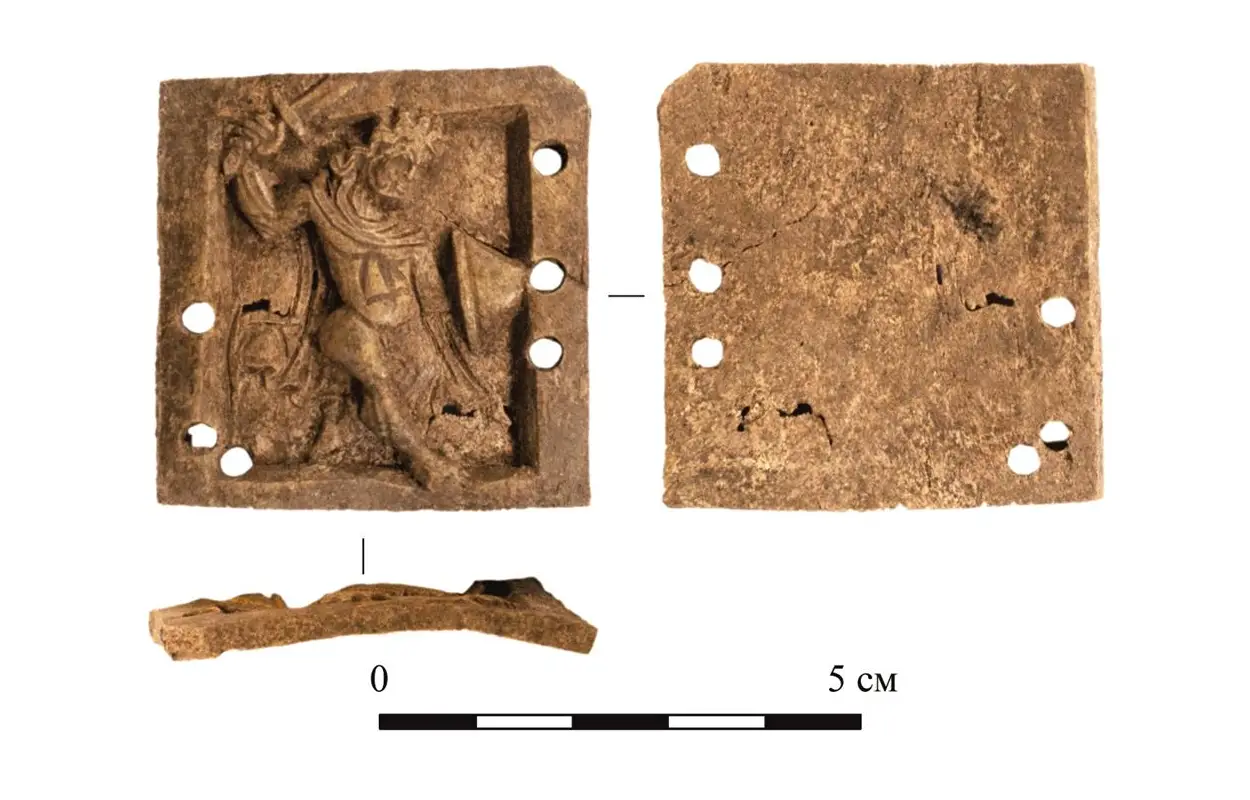Archaeologists from the Institute of Archaeology RAS have discovered a Byzantine plaque, intricately carved from animal bone, within the historic walls of Suzdal, Russia.
The square plaque measures 45 x 46 mm and features an intricately carved image of a semi-naked warrior wielding a sword and shield. The detailed depiction includes finely crafted facial features and flowing hair, in addition to six asymmetrical mounting holes around the raised exterior border.
Experts suggest that the plaque is a decorative overlay from a casket crafted by artisans in Chersonesus or Constantinople during the Byzantine period. These caskets were common from the 10th to 12th centuries and featured small plaques attached using bone nails or pins.
Initially, the plaque overlays were made from rare materials such as ivory, but from the 12th century the tradition turned to using bone from domestic or wild animals.
According to a press statement by the Institute of Archaeology RAS: “Bone plaques from boxes decorated with artistic relief carvings are an extremely rare and valuable find in the territory of Ancient Rus’.”

The plaque was discovered among the remains of historic dwellings from the 12th to 14th century, alongside stone crosses, an encolpion (a medallion worn by Eastern Orthodox and Eastern Catholic bishops), a glass vessel with an enamel painting, an iron key, and Drahičyn type seals from the Brest Region of Belarus.
“The discovery indicates that the inhabitants of medieval Suzdal embraced not only the traditional Christian worldview and elements of material culture, but also had exposure to ancient images and mythology through such objects, which were integral components of Byzantine art,” said the Institute of Archaeology RAS.
Header Image Credit : RAS
Sources : Institute of Archaeology RAS





